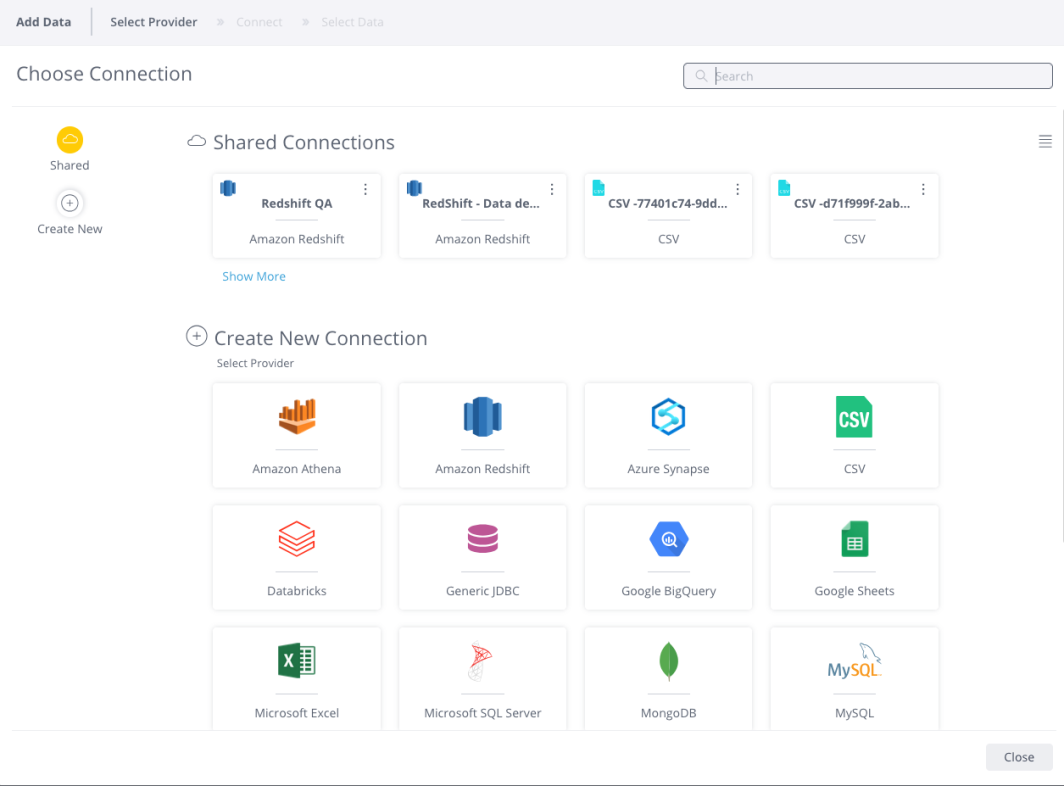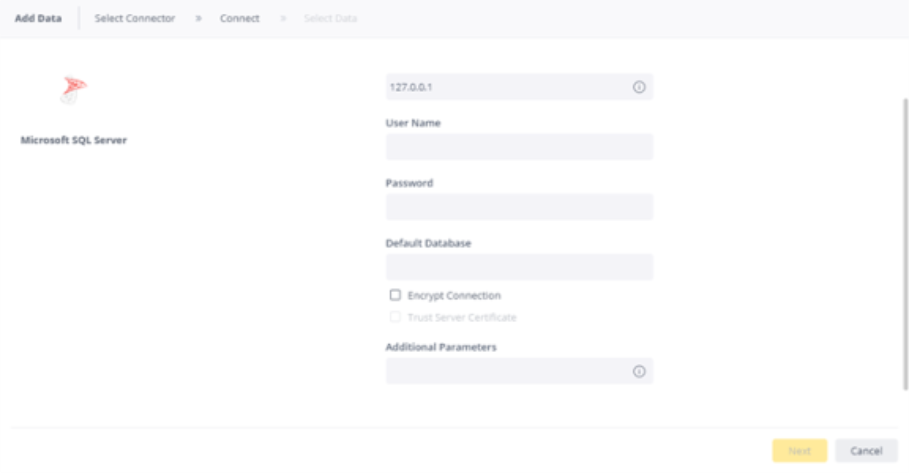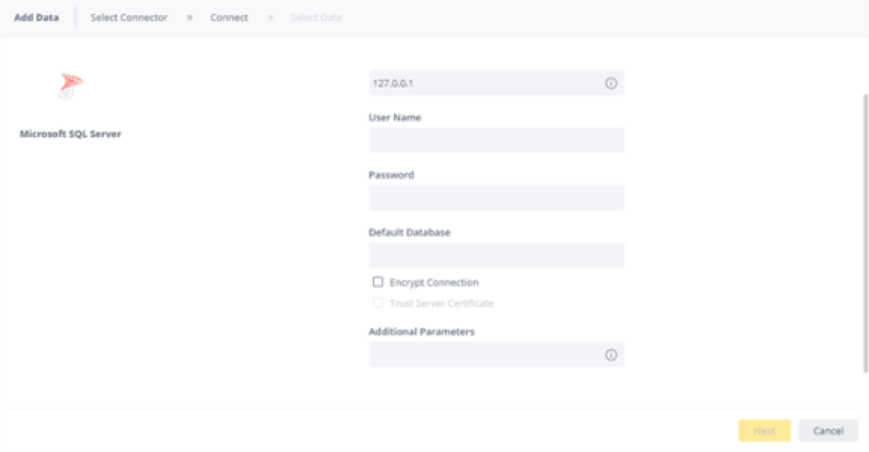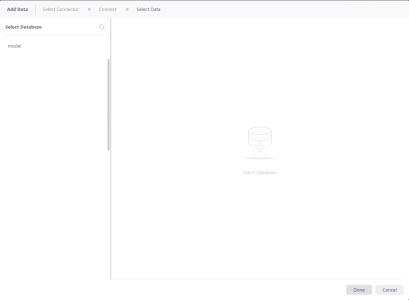Connecting to SQL Server
This topic describes how to import data into Sisense's ElastiCube , and how to use Introducing Live Models.
Sisense enables easy and quick access to databases, tables and views contained with SQL databases.
You can import your data into a Sisense ElastiCube, or connect your data to a Sisense Live model, using Creating Live Models and Adding Live Connections.
Adding a SQL Server Live Connection
To add a SQL Server Live connection:
-
Open a live model. See Creating Live Models and Adding Live Connections for more information.
-
In the Model Editor, click
 . The Choose Connector window is displayed.
. The Choose Connector window is displayed.
-
Choose an available managed connection, or create a new connection, for SQL Server. The SQL Server area is displayed.

-
In Location, enter the computer/server IP address of the database. To connect to a database running on your own computer, enter localhost.
-
In User Name and Password, enter your SQL database credentials.
- In Default Database, enter the name of the default database you will use for authentication. The Default Database is an optional property in the connection to a data source. When specified, it acts as a starting point or shortcut, automatically selecting a database during the connection setup to streamline user workflows.
(Optional) Select Encrypt Connection to configure the driver to encrypt all communication with the SQL Server instance before sending it over the network, and then select Trust Server Certificate.
(Optional) In Additional Parameters, enter additional configuration options by appending key-value pairs to the connection string.
Example:
- Specifying application intent:
ApplicationIntent=ReadOnly - Specifying an alternate port, such as
portNumber=1234 - Examples for additional parameters can be found here.
- Specifying application intent:
Click Next.
Under the Select Data tab, on the left side is a list of schemas located in your data source. Select the relevant schema. You can find the schema easily by searching for it through the search field at the top of the list to filter the schemas displayed. After selecting the schema, a list of the available tables and views are displayed.
Select a table or view. You can find the table easily by searching for it through the search field at the top of the list to filter the tables displayed.
Click Done; the table is added to the model.
IMPORTANT:
The Default Database is not a security feature. It does not restrict Sisense users from accessing other databases within the data source. Access should be regulated through user permissions in the SQL Server database management system.
See Publishing Live Models for information about how to publish the model and begin creating visualizations with it.
Note:
Sisense connects to your SQL database through the default port 1433. This port should be open to Sisense so a connection can be made. Contact your IT department if this port is closed.
Importing from an SQL Database
To import data from your SQL database:
-
In the Data page, open an ElastiCube or click
 to create a new ElastiCube .
to create a new ElastiCube . -
In the Model Editor, click
 . The Choose Connector window is displayed.
. The Choose Connector window is displayed.
-
Choose an available managed connection, or create a new connection, for SQL Server. The SQL Server area is displayed.

-
In Location, enter the computer/server IP address of the database. To connect to a database running on your own computer, enter localhost.
-
In User Name and Password, enter your SQL database credentials.
- In Default Database, enter the name of the default database you will use for authentication. The Default Database is an optional property in the connection to a data source. When specified, it acts as a starting point or shortcut, automatically selecting a database during the connection setup to streamline user workflows.
(Optional) Select Encrypt Connection to configure the driver to encrypt all communication with the SQL Server instance before sending it over the network, and then select Trust Server Certificate.
(Optional) In Additional Parameters, enter additional configuration options by appending key-value pairs to the connection string.
Example:
- Specifying application intent:
ApplicationIntent=ReadOnly - Specifying an alternate port, such as
portNumber=1234 - Examples for additional parameters can be found here .
- Specifying application intent:
Click
 . A list of tables in
the database are displayed. All tables and views associated with the database appear in a new window.
. A list of tables in
the database are displayed. All tables and views associated with the database appear in a new window.

From the Select Table list, select the relevant database you want to work with, and click Done. To view a preview of data contained in a particular table, select the table or view in the list and in click the Preview Table.
After you have selected all the relevant tables, click Done.
IMPORTANT:
The Default Database is not a security feature. It does not restrict Sisense users from accessing other databases within the data source. Access should be regulated through user permissions in the SQL Server database management system.
Note:
When running a query, verify that the results correspond to the intended query. For example, verify that the date range queried returns the results from the dates selected. If this does not work as expected, there is a problem with the live provider. Querying a live preview is written in SQL and runs directly on the live provider (this is not a Sisense issue).